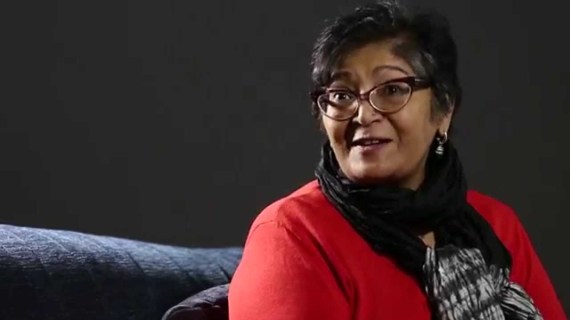As the new President of the Convention on Cluster Munitions, Sri Lanka must explain why de-miners have repeatedly found cluster remnants in the 2009 war zone, given the ongoing denial, a former member of a UN panel on Sri Lanka said.
All the evidence points to government forces using cluster munitions in 2009 against densely populated areas that they unilaterally declared safe for hundreds of thousands of Tamil civilians, the Executive Director of the International Truth and Justice Project, Yasmin Sooka, who first investigated the allegations in 2011 for the UN Secretary General’s Panel of Experts on Sri Lanka, said.
She says the allegations that Sri Lankan forces used the banned weapons during the war have been so persistent that in 2016 the UN High Commissioner for Human Rights himself called for an independent and impartial investigation to be carried out, which has yet to happen.
“Fudging your own past use is simply not an option as President of the body championing the campaign to eliminate this banned weapon,” she said.
“Tamils who worked for the United Nations and de-mining groups tell us on several occasions they personally witnessed cluster munitions falling and examined the casings immediately afterwards. Doctors in the war zone operated to remove a cluster munition embeded in a woman’s leg. After the war, deminers described finding cluster remains in several locations, only to have the army cordone off the area and keep the findings secret from the local community,” she added.
Under the Convention, Sri Lanka is required to show transparency and report annually in a public document on use, stockpiling, clearance and destruction. These obligations include issuing an immediate and effective warning to civilians living in cluster munition contaminated areas, instead the Sri Lankan Army has to date tried to hide discoveries of cluster munitions and has not informed or consulted local communities as required by the Convention.
Indeed on becoming President of the Convention on Cluster Munitions this month, Sri Lanka’s Permanent Representative to the United Nations in Geneva, Ambassador A.L.A Azeez, again flatly denied the country had ever used cluster munitions without explaining how the remnants keep being discovered.
“This continual denial is an ever increasing affront to the victims who witnessed the death and injury of loved ones – or were themselves injured by cluster munitions,” said Ms. Sooka. “The Government of Sri Lanka has never explained how cluster munitions were dropped from the air onto civilians if it wasn’t from their jets”.
Under the Convention on Cluster Munitions Sri Lanka has an obligation to persuade other states to join, which is difficult to do if the President lacks transparency over both its own alleged past use and its clearance operations post-war.
The Convention also requires Sri Lanka to assist victim communities and not to discriminate against or among victims (Article 5e). At the same time, identifying themselves in the current climate could put Tamil victims at risk from the security forces. Those who are former combatants and not yet detained would fear coming forward because they would risk detention in the government’s “rehabilitation programme”, which was recently declared “wrongful detention” by the UN Working Group on Arbitrary Detention.
Courtesy: Colombo Gazette



